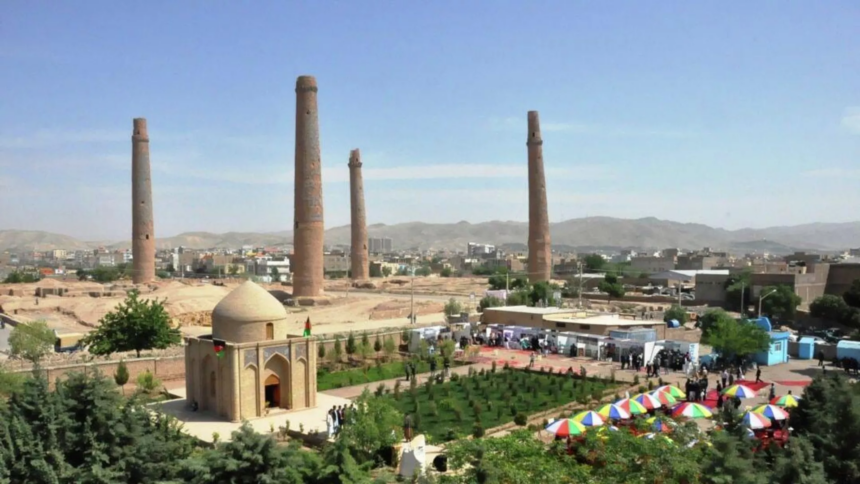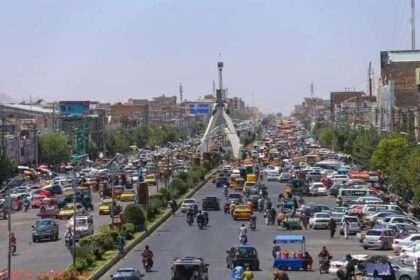RASC News Agency: In yet another grotesque display of cruelty, the Taliban in Herat executed a man identified as Daoud, accusing him of collaborating with anti-Taliban resistance groups and of orchestrating the killing of one of their local commanders. Rather than pursuing any semblance of judicial process, the group turned his death into a public spectacle, parading his bloodied corpse through the streets in a medieval performance of intimidation. Footage circulating on social media captures the Taliban’s chilling theater of violence. Surrounded by armed militants, Daoud’s lifeless body is displayed as a trophy. One Taliban fighter loudly accuses him of assassinating Mullah Hassan Akhund, the Taliban’s security chief in Herat’s 10th district. The video shows fighters kicking Daoud’s face, mocking him in death, while a voice in Pashto declares that he was responsible for the commander’s demise.
A second video depicts Taliban gunmen dragging Daoud’s corpse from the back of a military Ranger vehicle through Herat’s streets an image disturbingly reminiscent of the barbaric rituals once employed by ISIS. In another photograph, a crudely written paper is pinned to his body bearing the slogan: “Death to the Liberation Movement of Afghanistan.” The Islamic People’s Liberation Movement of Afghanistan, a resistance faction operating in Herat, had earlier claimed responsibility for the attack that killed Mullah Hassan Akhund and wounded his guard. The group later announced that the guard had also died of his injuries. Speaking to Afghanistan International, one member confirmed that Daoud was indeed part of their ranks and accused the Taliban of desecrating his body, warning that the insult would not remain unanswered.
The Liberation Movement, though shadowy in leadership and structure, has recently intensified its operations against Taliban strongholds in Herat. Alongside them, the National Resistance Front led by Ahmad Massoud and the Freedom Front of Afghanistan led by Yasin Zia continue to challenge Taliban dominance militarily in various provinces. Together, these movements represent the growing refusal of Afghanistan’s citizens to accept Taliban rule as either legitimate or permanent. The Taliban’s public mutilation of Daoud’s body highlights their deep reliance on archaic instruments of fear rather than governance. By dragging corpses through the streets, they attempt to project power, yet in reality, they reveal a regime haunted by insecurity and terrified of the armed resistance that is slowly eroding their grip. Far from strengthening their authority, these spectacles lay bare the Taliban’s moral bankruptcy, exposing them not as rulers but as wardens of a vast prison where cruelty substitutes for law, humiliation replaces justice, and fear is wielded as the only currency of control.
In the eyes of many Afghanistani citizens, such barbaric displays only further strip the Taliban of credibility, confirming what has long been evident: this is a movement incapable of providing governance, dignity, or stability relying instead on brutality to conceal its profound weakness.






